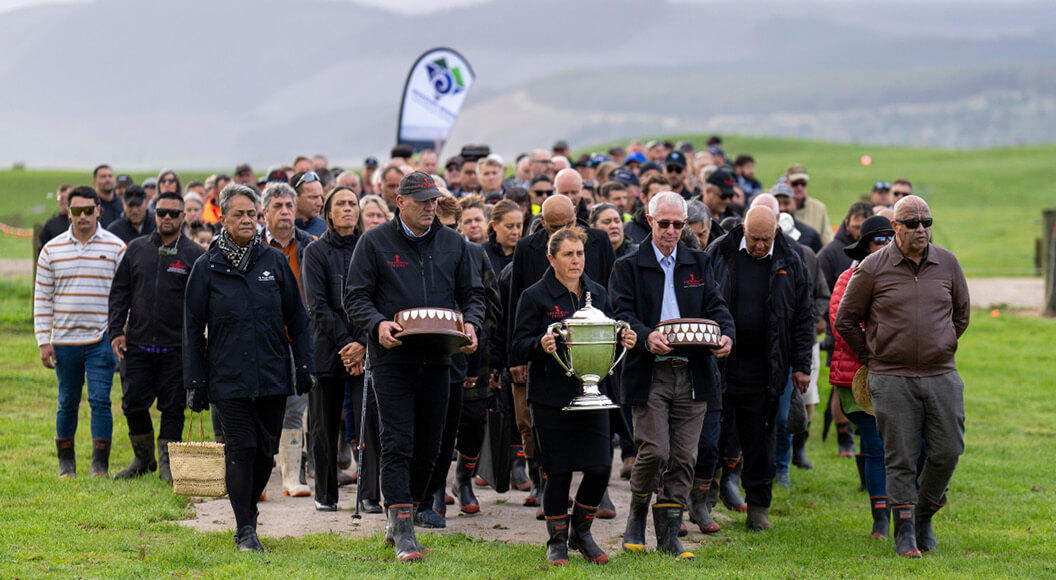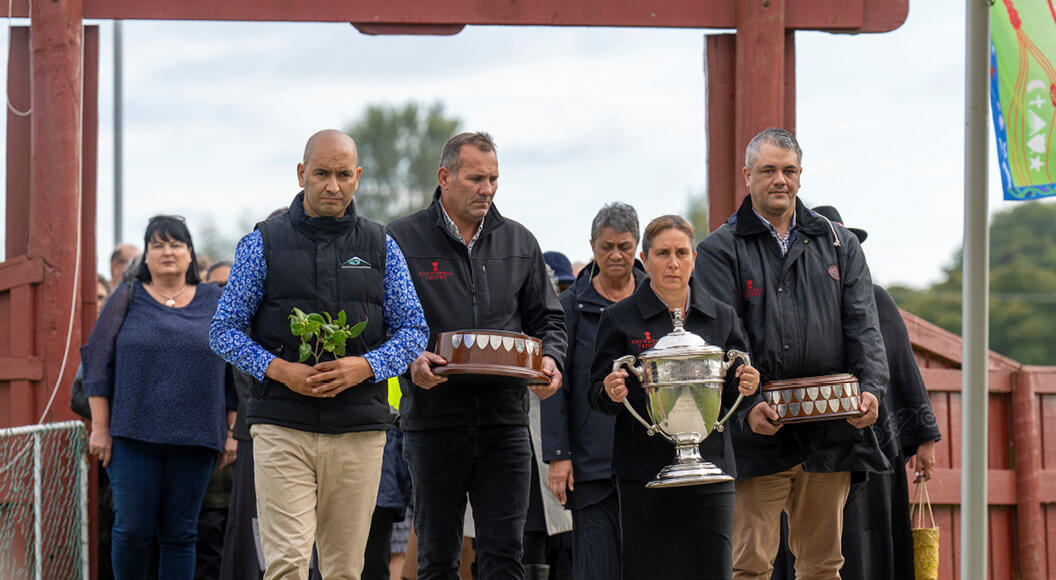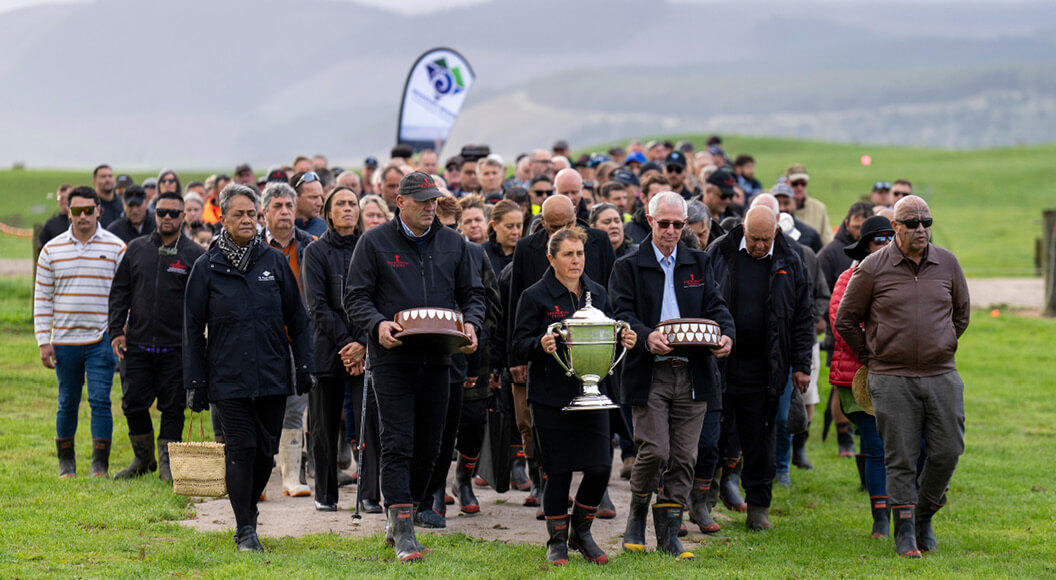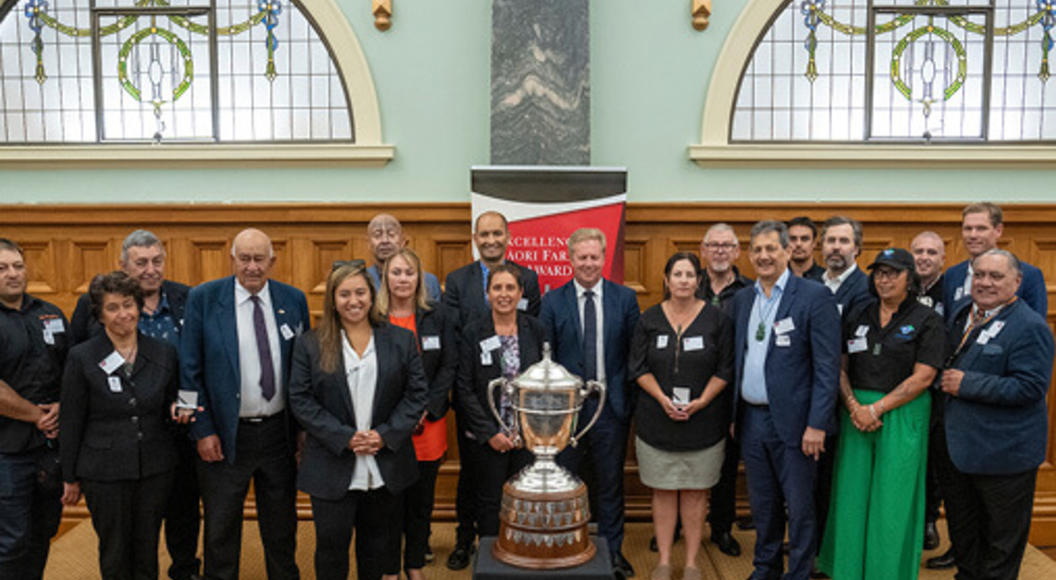
Ahuwhenua Trophy Field Day - Wairarapa Moana ki Pouakani Incorporation
More than 300 people turned out this week to a field day at Wairarapa Moana ki Pouakani Incorporation’s (WMI) dairy farm near Mangakino in the Waikato.
WMI is one of two finalists in this years Ahuwhenua Trophy competition to select the top Māori dairy farm in Aotearoa. As part of the competition, each finalist stages a field day at their respective farm to give people the chance to come and see their property and hear about how it has made it through to the finals of this prestigious competition. Guests included rural professionals, sponsors, Māori agribusiness leaders, local farmers, whānau, and the finalists in the Ahuwhenua Young Māori Farmer award. After hearing presentations from WMI trustees and staff, guests were taken on a tour of the farm.
WMI consists of 12 dairy units across 4,300ha, plus three dairy support units comprising 1,900ha and two forestry blocks totalling 6,100ha. It aims to produce five million milksolids from its 12,000 cow herd and is the largest supplier to milk processor Miraka Ltd. WMI has entered one of its dairy units into the competition, Farm 4, which has a milking platform of 300ha, milking 980 cows and producing 416,000 kg/MS.
The Chair of WMI, Kingi Smiler says it was a fantastic day with a great turnout. He says the WMI trustees, senior management and farm team did very well, and with lots of questions during the presentations it was very informative. “Despite the forecast it was great that the rain stayed away for the property tour and the farm was looking in terrific shape,” he says. Kingi Smiler says it was a major undertaking to organise the field day and they had a big team of staff helping out behind the scenes to make it such a success.
Nukuhia Hadfield, Chair of the Ahuwhenua Trophy Management Committee, says this was yet another great field day with an awesome turnout, showcasing farming excellence in a very practical way. She says it was a well presented property and the herd looked magnificent.
“WMI is a very large operation and is playing a significant role in the economy of Aotearoa. As a major shareholder in Miraka, WMI is a role model for the concept of sustainability and one that all farmers in the country should look at,” she says.
“Another highlight of the day was having the three Ahuwhenua Young Māori Farmer finalists present and hearing about their passion for the industry. We have to harness and encourage this attitude – the agriculture sector is going through difficult times, and it is really heartening to hear young people speaking with such enthusiasm,” she says.
Nukuhia Hadfield says this coming week there is another field day being held by Whakatōhea Māori Trust Board at their dairy farm near Opotiki, which will be an equally good event, showcasing another very successful dairy farming operation.
Final field day date
- Thursday 4 April 2024 – Whakatōhea Māori Trust Board
The winner will be announced at the awards dinner held on Friday 17 May 2024 at the Globox Arena, Claudelands Event Centre, in Hamilton.
Finalist Profile
Wairarapa Moana ki Pouakani Incorporation
The story of the formation of Wairarapa Moana ki Pouakani Incorporation (WMI) and the ownership of some 30,486 acres of the Pouakani 2 Block in Mangakino, South Waikato has its origins in the colonisation of the Wairarapa after 1840. Wairarapa Moana hapū had valuable landholdings and customary fishing rights for tuna in and around Lake Wairarapa, however by the late 1800s continual pressure from farmer settlers and Crown coercion ultimately led to the hapū gifting the lake to the Crown in 1896 in exchange for other lands in the Wairarapa.
The Crown did not honour the original agreement and were not prepared to source lands locally in Wairarapa, so in 1915 with great reluctance the hapū leaders at that time accepted the land known as the Pouakani 2 Block in Mangakino.
Access to the land was only made available in 1946 as a result of the building of the Maraetai dam by the Ministry of Works, who had commenced major works without seeking the consent of the WMI landowners. The crown also acquired 2,000 acres of the Pouakani 2 Block under the Public Works Act for the dam infrastructure.
For the period from 1947 to 1983 the Pouakani lands were developed by Māori Affairs Department under the Māori Land Development Scheme first set up by Ta Apirana Ngata in 1929. The first whānau from the Wairarapa moved to Mangakino in 1948 to begin farming. The block was initially developed into twenty 100 acre dairy units and two large sheep and beef units with the remaining lands planted in radiata pine.
So, it took some 87 years since the gifting of the Lake to the Crown, before the owners finally had control of their own whenua.
WMI currently consists of 12 dairy units across 4,300ha, three dairy support units comprising 1,900 ha and two forestry blocks totalling 6,100ha. It aims to produce five million milksolids from its 12,000 cow herd and is the largest supplier to milk processor Miraka Ltd, of which WMI is a cornerstone shareholder.
Today 128 years later WMI continues under the stewardship of the mokopuna of the original 230 owners, Kingi Smiler (Chair), Te Horipo Karaitiana (Deputy Chair), Anne Carter, Sonya Rimene and Brad Tatere. The Committee’s aspiration is to continue to nurture their taonga for future generations guided by the overarching philosophy of kaitiakitanga.
WMI has entered one of its dairy units into the Ahuwhenua Trophy Competition, which has a milking platform of 300 hectares, milking 980 cows and producing 416,000 kg/MS. This is managed by Kim Turner and her 2IC, Haley Webber.
With a strong focus on optimising both economic and environmental performance, WMI has comprehensive business and environmental plans, aimed at building a sustainable and resilient business. WMI also provides cultural and social investment to support the well-being of our tipuna marae, our owners and wider whānau, as well as the local community in Mangakino and Wairarapa.


